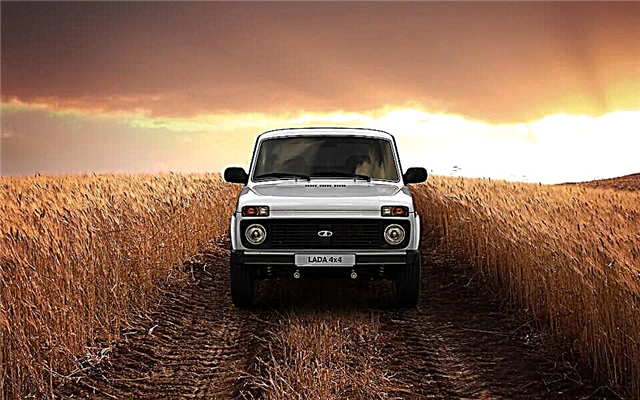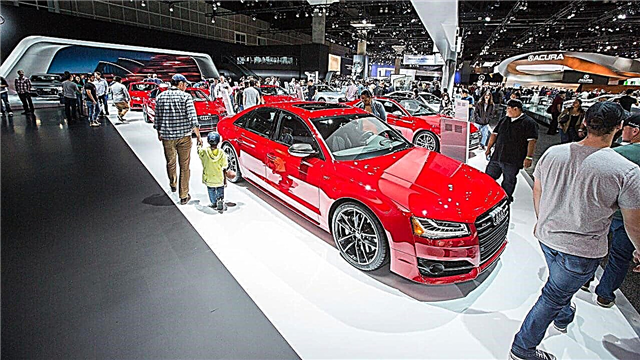If the flagship smartphone is too expensive, and a cheap one does not offer all the functions you need, there is always a reasonable compromise. And his name is the best smartphone 2020 to 30,000 rubles.
In 2020, there are a lot of good smartphones that are offered at such a price, but we will help you choose one that is optimal for both cost and performance.
10. Moto G7 Plus

- Android OS 9.0
- screen 6.2; resolution 2270 x 1080
- 16 MP / 5 MP, autofocus
- 64 GB, memory card slot
- 3G, 4G LTE, LTE-A, Wi-Fi, Bluetooth, NFC
- RAM 4 GB
- 3000 mAh battery
The word “plus” in the name of this model is not entirely true - the diagonal of the Moto G7 Plus is moderate (6.2 inches), the battery is also so-so (3000 mAh). But in return, the buyer gets more interesting and convenient features like an optical image stabilization system in the camera, fast charging, stereo speakers and Bluetooth 5.0.
The phone’s screen has a fashionable 19: 9 aspect ratio, and although it is not OLED, it looks very decent even in bright light. It is also equipped with a water-repellent coating, so that it can easily tolerate raindrops. Its colors are vibrant and natural, and Full HD resolution.
The phone has 4 GB of RAM, 64 GB of memory and a slot for a card with a capacity of 512 GB. Its main difference from the usual, not "plus" version is a better processor. The chipset of the Moto G7 Plus is Snapdragon 632, and the graphics processor is Adreno 509. However, the processor capacities are not enough to overtake the main competitors - Xiaomi and Honor products of the same price category.
pros: design, screen, fast charge, camera.
Minuses: There are more productive phones.
9. Oppo Reno Z

- Android OS 9.0
- 6.4 ″ screen, resolution 2340 × 1080
- dual camera 48 MP / 5 MP, autofocus
- 128 GB memory, without memory card slot
- 3G, 4G LTE, Wi-Fi, Bluetooth, NFC
- 4 GB RAM
- 4035 mAh battery
Oppo's new Reno Z is trying to bring flagship looks, tactile sensations and a range of features to the mid-price segment of the mobile market. And he succeeded in this idea, with a few exceptions, which we will discuss below.
An AMOLED screen with an aspect ratio of 19.5: 9 reads well in bright sunshine. Black on it is really black, and the other colors are saturated enough so that you do not have any complaints about the picture.
Under the hood of this smartphone is a MediaTek MT6779 processor with 4 GB of RAM and a PowerVR GM9446 video accelerator. This platform is slightly slower (5.49% to be exact) than its closest competitor Qualcomm Snapdragon 855, but don’t worry, you won’t even notice it. Both heavy games and applications go to Oppo Reno Z quickly and without lags.
But the main camera immediately reveals that Reno Z is not the flagship, but only the "average". It is by no means bad, and the obtained pictures can be easily uploaded to social networks, but this unit is far from the quality of shooting Pixel 3a or other recognized camera phones.
pros: 3.5 mm audio jack, looks like a premium smartphone, excellent display, long battery life.
Minuses: Not the most convenient firmware with a confusing menu, no wireless charging.
8. Vivo V17

- Android OS 9.0
- 6.38 ″ screen, resolution 2340 × 1080
- four cameras 48 MP / 8 MP / 2 MP / 2 MP, autofocus
- 128 GB memory, memory card slot
- 3G, 4G LTE, Wi-Fi, Bluetooth, NFC
- 8 GB RAM
- 4500 mAh battery
What can surprise this picky Russian smartphone? The ability to make contactless payments? But many cheaper models have this feature. Bright and large frameless AMOLED screen? But he can not compete with the smartphone with the largest display. Capacious battery? This has already become the standard for the best smartphones up to 30,000 rubles.
But if you add to all these advantages a well-thought-out, elegant design, good equipment with a protective film, headphones and a case, support for the WCD9335 audio codec from the Qualcomm Aqstic family and a good, though not top-end Qualcomm Snapdragon 665 processor, it will become clear that Vivo V17 is worth the money.
An interesting feature of it is the diamond-shaped module of cameras. As for the resolution of the main camera, 48 MP is a marketing ploy. In fact, the smartphone takes photos with a resolution of 12 MP, which then interpolates to 48 MP. However, even so, the pictures are obtained with a small amount of noise and good detail. In addition, the Vivo V17 has an image histogram function that allows you to evaluate the correct exposure of the frame directly during shooting.
pros: 3.5 mm audio jack, AOD screen mode, long-life battery with fast charging at 18 watts.
Minuses: At high volume, a slight rattle is heard, an uncomfortable signature shell.
7. Honor 20 Pro

- Android OS 9.0
- 6.26 ″ screen, resolution 2340 × 1080
- four cameras 48 MP / 16 MP / 8 MP / 2 MP, autofocus
- 256 GB memory, without memory card slot
- 3G, 4G LTE, Wi-Fi, Bluetooth, NFC
- 8 GB RAM
- 4000 mAh battery
Specifications, such as a powerful HiSilicon Kirin 980 processor, a large amount of RAM, and a capacious battery with fast charging make the Honor 20 Pro a good smartphone.
But the rear camera makes it one of the best, which was inspired by the work done on the Mate 20 Pro (one of the top 5 best camera phones of 2019), and improved to the delight of mobile photography enthusiasts.
In difficult lighting situations, the HDR control in the Honor 20 Pro works very well and takes pictures with realistic exposure levels in different places of the scene.
Despite the fact that the Honor 20 Pro is lower in the hierarchy of the Huawei product line than the more expensive P30 Pro and P30, it takes ultra-wide photos with more realistic and accurate colors. And P30 Pro and P30, as a rule, add more blue or gray tones to pictures.
Please note that, despite the technical specifications of 48 MP, Quad-Bayer sensors are usually designed to work with a resolution of 1/4 (here 12 MP). That is why photographs in the "automatic" mode were taken with a resolution of 12 MP, not 48 MP.
The Honor 20 Pro also has a 2 MP macro camera, which can take clear pictures at a distance of only ~ 4 cm from the subject.
pros: many camera modes provide decent image quality, great design, a hole for a selfie camera is almost imperceptible and does not distract from reading from the screen.
Minuses: No 3.5mm headphone jack.
6. Xiaomi Mi Note 10 Lite

- Android OS 10
- 6.47 ″ screen, resolution 2340 × 1080
- four cameras 64 MP / 8 MP / 5 MP / 2 MP, autofocus
- 128 GB memory, without memory card slot
- 3G, 4G LTE, Wi-Fi, Bluetooth, NFC
- 8 GB RAM
- 5260 mAh battery
This smartphone may not be suitable for photography enthusiasts, unlike its older brother without the “Lite” prefix, but it will appeal to potential buyers who value the long battery life. Even with the most intensive use, Mi Note 10 Lite will last at least 2 days, and in standby mode it will live a week at all.

As for the other characteristics, they are above average, but not by much, which corresponds to the price of the device. The Qualcomm Snapdragon 730G chipset in combination with the Adreno 618 video processor and 8 GB of RAM will successfully cope with any game that you download to your smartphone.
The main difference between the “light” and “regular” versions of Mi Note 10 is the main camera. If the normal version has a 108 MP camera, then Lite is content with a 64 MP main sensor. Also, instead of two telephoto cameras with optical zoom, the Lite version is equipped with one depth sensor, and the wide-angle photo module has a resolution of 8 MP instead of 20 MP.
pros: 3.5 mm audio jack, 30 W fast charge, fast sub-screen fingerprint scanner.
Minuses: no wireless charging.
5. Samsung Galaxy A71

- Android OS
- screen 6.7
- resolution 2400 x 1080
- 64 MP / 12 MP / 5 MP / 5 MP, autofocus
- 128 GB memory, memory card slot
- 3G, 4G LTE, Wi-Fi, Bluetooth, NFC
- RAM 6 GB
- 4500 mAh battery
The top five smartphones rating up to 30,000 rubles in 2020 opens the model from Samsung. Galaxy A71 differs from the flagships of the series except that the plastic back panel, the lack of wireless charging and waterproof. However, these are such things that an ordinary user can easily do without.
And Galaxy A71 has a nice set of features that are usually associated with expensive mobile phones. For example, face recognition, a fingerprint scanner and a slot for a memory card. And the eight-core Snapdragon 730 processor easily pulls all demanding games at medium and high settings.
The battery is also nice to see. Its capacity of 4500 mAh provides at least a day of continuous operation in the "social networks-calls-video-music-games" mode. And charging works pretty fast - its power is 25 watts.
pros: design, large AMOLED screen, camera.
Minuses: Too many pre-installed applications and games.
4. Huawei Nova 5T

- Android OS 9.0
- 6.26 screen, resolution 2340 x 1080
- 48 MP / 16 MP / 2 MP / 2 MP, autofocus
- 128 GB memory, without memory card slot
- 3G, 4G LTE, Wi-Fi, Bluetooth, NFC
- 6 GB RAM
- 3750 mAh battery
Although the title of “smartphone with the best camera in the world”, the Huawei Nova 5T will not receive at least because of its price category, it cannot be said that he did not try. This is a very worthy device with a 6.26-inch screen and a 32 MP selfie camera.
The design and processor are exactly the same as the flagship, Huawei P30 Pro. This is a Kirin 980 with a Mali-G76 MP10 GPU. The phone has enough power to calmly play the most demanding games.
However, the main thing that distinguishes the smartphone from its competitors is an excellent camera with four lenses. The Nova 5T offers a 48-megapixel main camera, a 16-megapixel ultra-wide and two 2 MP modules - a depth sensor and a macro lens. And the AI capabilities and many camera settings will allow you to create a highly detailed picture in any conditions.
pros: design, night shooting, productivity.
Minuses: no telephoto lens and memory card slot, not too powerful battery.
3. Realme 6 Pro

- Android OS 10
- screen 6.6 ″, resolution 2400 × 1080
- four cameras 64 MP / 12 MP / 8 MP / 2 MP, autofocus
- 128 GB memory, memory card slot
- 3G, 4G LTE, Wi-Fi, Bluetooth, NFC
- 8 GB RAM
A distinctive feature of this smartphone is the refresh rate of 90 Hz, and it works regardless of resolution. Of course, the image on the display will not be as smooth as that of flagships like the Samsung Galaxy S20 and other new smartphones in 2020, but after 60 Hz screens you will not want to switch from Realme 6 Pro to something else.
Compared to its predecessor, the Six placed a greater emphasis on cameras. The updated model boasts the presence of a four-chamber module at the rear and a dual camera for selfie in front. Whether shooting a portrait, night shooting, or carefully crafted panoramic photography, Realme 6 Pro can do all this efficiently and quickly, without the need for additional processing of the image. So, if you need a smartphone with the best camera in 2020 up to 30,000 rubles, select Realme 6 Pro - you won’t be mistaken.
The company chose Snapdragon 720G as the chipset for this model. This mid-range processor is characterized by several features, such as support for Bluetooth 5.1 and the Adreno 218 GPU. It will pull any modern gaming mobile project at maximum settings.
pros: there is a 3.5 mm audio jack, a well-optimized shell, thanks to a fast 30 W charge, the smartphone charges up to 100% in just an hour, a beautiful gradient design.
Minuses: the back panel is just a magnet for fingerprints, users complain that the 90 Hz mode turns on and off by itself. Perhaps this will be fixed in new firmware.
2. Xiaomi Redmi Note 9S

- Android OS 10
- screen 6.67 ″, resolution 2400 × 1080
- four cameras 48 MP / 8 MP / 5 MP / 2 MP, autofocus
- 128 GB memory, memory card slot
- 3G, 4G LTE, Wi-Fi, Bluetooth
- 6 GB RAM
- 5020 mAh battery
Redmi Note is the best-selling series in the history of Xiaomi. Both Redmi Note 7 and 8T have been praised by experts for an excellent balance between functionality, performance and price. The last model in the series also turned out to be successful, so much so that many have already awarded her the title of “killer of middle-class smartphones”.
Redmi Note 9S is a prime example of how to produce relatively inexpensive smartphones without sacrificing anything. Well, almost nothing. The 6.67-inch display and Full HD resolution (screen-to-body ratio - an impressive 91%) at first glance seems huge. However, you can safely hold it in one hand - the finger will easily reach everything you need.
There is a drop of tar - the refresh rate at the screen is 60 Hz, but already some mid-range smartphones have mastered 90 Hz, and the flagships have long moved to 120 Hz.
One of the most noteworthy features of the new product is the giant 5020 mAh battery. Of course, it affected the weight of the smartphone (209), but thanks to the rounded edges it fits nicely in the hand.
We should also mention the tray in the upper left corner, which can accommodate not only a memory card (up to 512 GB), but also two nano SIM cards.
pros: design, performance, battery capacity.
Minuses: there is no support for contactless payments, the camera mediocre shoots at night.
1. Xiaomi Mi 9T

- Android OS 9.0
- 6.39 screen; 2340 x 1080 resolution
- three cameras 48 MP / 8 MP / 13 MP, autofocus
- 64 GB memory, without memory card slot
- 3G, 4G LTE, Wi-Fi, Bluetooth, NFC
- 6 GB RAM
- 4000 mAh battery
Nowadays, China is deservedly awarded the title of the most high-tech and smartphone-loving country. It is there that relatively inexpensive devices are manufactured, but made taking into account the latest achievements of science and technology.
And in the rating "which smartphone is up to 30,000 rubles the best in 2020?" the first place is awarded to the Xiaomi product - Mi 9T. It was able to perfectly balance both in terms of performance and useful functions. And last but not least the role was played by design - stylish, concise, elegant.
Of course, in comparison with other models of the line, the Mi 9T has a slightly lower pipe and a little thinner smoke. The device cannot boast of a flagship processor and wireless charging. But he has something that most competitors do not have - a retractable front-facing selfie camera with a resolution of 20 MP.
This solution allowed us to protect the screen from "cutouts", "drops" and other distracting elements, and in addition to excellent selfies, the retractable camera also has an unlock function on the face.
Although the processor of the Mi 9T is a mid-range Snapdragon 730, and there are no recent fashionable things like a graphite cooling system, however, in general, the device’s capabilities are more than enough for watching videos, reading browsers and games.
pros: design, quality of shooting from the main and front cameras, productivity.
Minuses: Tin loudspeaker sound, no memory card slot.












